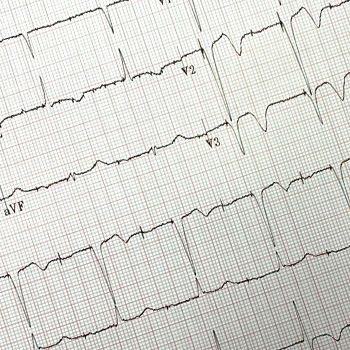Keywords
Cardiac memory, T-wave inversion, pacemaker
Abstract
Introduction: While T-wave inversions (TWI) are associated with various pathologies, they are rarely associated with cardiac memory, termed the Chatterjee phenomenon.
Case: A 76-year-old man with sick sinus syndrome with a pacemaker presented with chest tightness and new onset TWI in his precordial leads. On admission, he tested positive for COVID-19, but remained stable and only required minimal supplemental oxygen. His troponin was only slightly elevated, and EKG showed TWI throughout his precordial leads. A previous EKG had shown normal sinus rhythm without a paced rhythm or ST wave abnormalities. Interrogation of his pacemaker revealed an AV-paced rhythm. Given his chest tightness without dynamic changes in his troponin or EKG, the symptoms were considered more likely related to his COVID-19 infection, and he was discharged home.
Discussion: Aberrancies in normal cardiac conduction can result in altered electrical activation, especially for those with AV pacemakers, leading some patients to develop cardiac memory, manifesting as TWI.
Conclusion: AV-paced rhythm and narrow QRS complexes with TWI localized to precordial leads without evidence of active cardiac ischaemia may suggest cardiac memory, termed the Chatterjee phenomenon, requiring no invasive interventions.
References

Views: 342
HTML downloads: 142
PDF downloads: 321
Published:
2023-03-18
Issue:
2023: Vol 10 No 3
(view)










